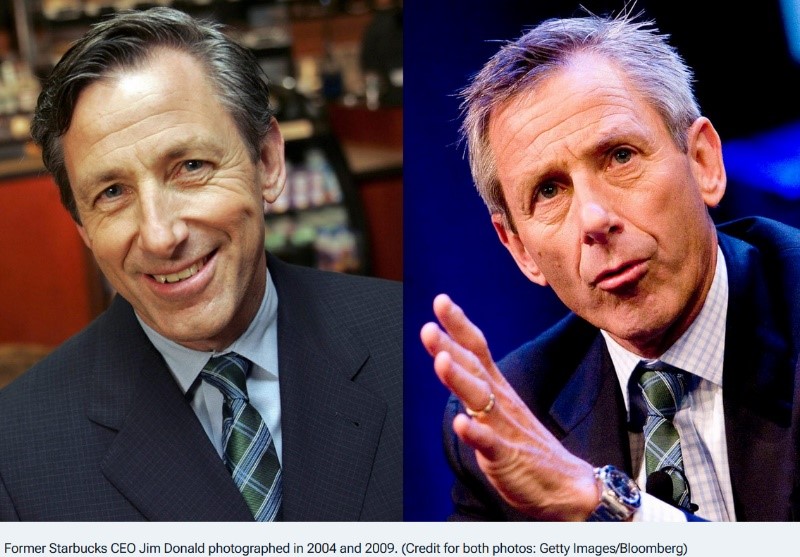The research may surprise you.

Scientists say early humans died young. Fossil records say average life expectancy was 38 years for Neanderthals, and 40 for Homo Sapiens. But this is a massive misconception of the consequences of calculating averages. If two humans, one dies at birth while the other is eaten by a Mammoth at age 70, the average age of death is 35.
Surviving birth was the first goal. And if you lived to 30 you could live into your 60s… that was 40,000 years ago.
But it wasn’t as much about their genes. Despite the constant struggle and stress to survive, our early ancestors’ actual lifespan was a surprising (60-70 years), only a couple decades less than modern humans live today. Which got me thinking.
Given the contemporary absence of lions, tigers, bears, hungry wolves and bone-crushing Mammoths, why has our life expectancy today only increased at a snail’s pace?
The answer is not medical science. It’s your job! And it may be killing you.
Add up the stats and we can now predict your life expectancy simply based on your job and where you live. Actuaries do it for a living, which then begs the obvious question:
“How long have I got, Doc?”
White-Collar vs. Blue-Collar — Choosing wisely
Did you know that the U.S. government has been tracking worker occupation deaths for decades? And they’re hiding a secret in plain sight?
According to a 2020 research study on life expectancy of working Americans by the National Institutes of Health from 1997-2014 by occupation, mortality rates among white-collar professionals from accountants to engineers, managers and CEOs has outpaced blue-collar workers’ by a decade.
As I show below, someone in a managerial or professional role can expect to live 82 years, while laborers and machine operators will clock out permanently around 71.
Once again. the difference is due more to environment than genetics. Gaps in lifespan today relate specifically to access to healthcare (and using it), workplace hazards (physical dangers), your degree of control over your own schedule, amount of travel (remote work vs RTO), and stress. The more of these, the shorter your lifespan.
If we summarize these characteristics by occupation, we get this list from the NIH data:

What surprised me wasn’t the occupation lifespan gaps. It was that after thousands of years modern laborers’ average lifespan isn’t much longer than our cave-dwelling ancestors’.
And it gets worse.
Apparently where you live really matters among the contributing factors to one’s life expectancy in America, and the data speaks for itself.
According to the Institute of Health Metrics & Evaluation, if you live in the red, you die in the red.

So, don’t head south?
Let’s put it this way. CDC researcher Dr. Mary Bassett sums it up, “Where you start in life—and which job you land—can be the difference between a long life or an early grave.”
The CDC reports 50% of early deaths in the South are attributable to poor diet and lack of healthcare both leading to catastrophic levels of heart disease and cancer.
And it’s not only lifestyle choices and poverty doing the damage. According to research by Johns Hopkins, jobs that involve high physical exertion, repetitive stress, and safety risks—from construction to long-haul trucking—contribute to faster biological wear and tear on your body and to more chronic illnesses. And from the looks of it much of the Blue-Collar South fits that bill with a list of killers that looks a lot like a Neanderthal’s list to me.
- Physical strain and injury
- Lack of access to preventative care
- Greater exposure to hazards and toxic substances
- Less schedule flexibility and decision-making power
- Workplace stress and psycho-social risk
- (Being crushed by a Mammoth – not part of the modern study)
Then there’s the other end of the spectrum.
Our wealthy, well-educated, more modern white-collar business owners and CEOs.
This group has abundant access to better diet, exercise and healthcare. Their jobs are more brain than brawn and they do live longer than many blue-collar workers.
But, while blue-collar workers cut out after a laborious 8-hour shift, white-collar executives can only watch them leave. If you’re in management you know the drill, crippling late night hours and layers of added stress at work can take their toll.
While blue-collar workers die younger from higher exposure to physical strain and fatality risks, CEOs and senior executives face other vulnerabilities—most notably, chronic psychological stress and higher rates of cardiovascular and immune-related diseases.
So. Is the tradeoff worth the money? Let’s ask.
If I offered to pay you $1 million dollars for every year I cut from your lifespan, would you take the deal?
——-
If you said yes, you’re likely a young go-getter with time to burn. But if you’re older, the answer is more likely, Hell No!
But let’s let the before and after pics speak for themselves.
But let’s let the before and after pics speak for themselves.

Jim Donald, CEO of Starbucks, from 2005 to 2008, smack in the middle of the historical Financial Crisis reveals firsthand it’s not just U.S. Presidents who age like milk in the sun.
In those few sleepless years Jim visually took it on the chin.

Or how about Apple CEO Tim Cook, who took over the reins as CEO when Steve Jobs resigned in 2011. He’s living proof that managing any company during tough times can seriously age you. And the bigger the gig, the faster you’ll age.
Hence the trade-off… your health… for cash.
Still. Make no mistake these men are true heroes in my book. At the time both Starbucks and Apple were facing strong headwinds. Starbucks saw declining foot traffic and the stock tanked. Meanwhile, Tim Cook was asked to fill the shoes of an industry titan on the brink, famous founder Steve Jobs at Apple. God himself could not avoid the cost of life in that role.
Both men faced enormous obstacles, odds stacked against them at every turn. And yet both men managed to right-size their ship, and were paid handsomely for it.
The trade-off paid off, I suppose. Had these men known the high cost of success is time, would they go back and ‘just say no’?
I was not surprised to read a 2020 UC Berkeley study of 1600 public company CEOs which found that when a company is under great stress, leadership health suffers as well.
CEOs in high-pressure environments died, on average, two years sooner than insulated peers—an accelerated direct consequence of economic stress.
“You might think that’s not a lot, but actually it’s huge. It’s comparable to significant health hazards like smoking,” says Professor Ulrike Malmendier, Berkeley Haas School of Business who co-authored the 2020 study.
These are cumulative and lasting consequences.
Meanwhile, NIH and the National Bureau of Economic Research confirm that industry downturns, hostile takeovers, and volatile stock prices accelerate executive aging, with the mortality risk for CEOs increasing relative to how exposed the firm is to market shocks, sales downturns and angry shareholders.
Which means Life is great at the top – until you suddenly look in the mirror and your admin says your doctor left a message to call him.
In other words, reap great rewards building an empire, but business owners and CEOs like the rest of us, must ‘pay the piper’ either way.
Chronic stress means higher rates of cardiovascular and immune-system illnesses, leading to shorter lifespans and fruitlessly burning out our late-night, corner office captains of industry one after another, like flares off the Titanic.
“What we’re beginning to understand is that life at the top isn’t that easy,” and top managers face health problems too, says Prof. Tom Nicholas at Harvard Business School.
And if you’ve been at the helm or in the corner office for more than 5-years, odds are you can already feel it. Look at your palm.
The hidden cost of leadership lingering inside you is quietly snipping away at the edges of your lifeline. An unwelcome reminder that daily job stress and worry climbing the corporate ladder or running a business can erase the longer-life advantages white-collar workers were fortunate to accrue in advance.
Is there anything you can do to beat the odds?
A 2021 study by JAMA (Journal of the American Medical Association) found that autonomy and job satisfaction—features more common in white-collar work—are powerful predictors of a longer life. So, if you hate your stressful job, a healthy choice would be to find a new one.
Similarly, socioeconomic results published by the National Bureau of Economic Research suggests higher income and educational achievement do directly link to longer life, both through access to better healthcare and reduced exposure to dangerous physical conditions.
We simply need to better appreciate the cost of work. Overall, on the bright side we do live longer than our ancestral cave painting clans, 40,000 years ago. But in the U.S., according to Healthdata.org by 2050 life expectancy will only increase by two years, dropping us from 49th to 66th in global lifespan. Two steps forward, three steps back.
Lastly, if your job is killing you and you can’t quit to save your life – target your elevated stress levels. Give nature a chance to help.
Get outside for 15 minutes each day, a lunch walk in the park calms our restless biology experts say. It’s called “eco-therapy,” like meditation, a little goes a long way.
The real trick as we age is to appreciate a modern human body over 50 years is like a fine-tuned bio-mechanical machine, a collective dynamic organism that responds to your genetics, lifestyle choices and occupational hazards every day. Take charge of it! You only get one.
So, here’s the bottom line: Whether you’re swinging a hammer or running a boardroom, the reaper takes his cut. The good news is the more you understand this and adapt, blue-collar or white… the longer you’ll outlive your inner caveman.
And who doesn’t want that, right?









